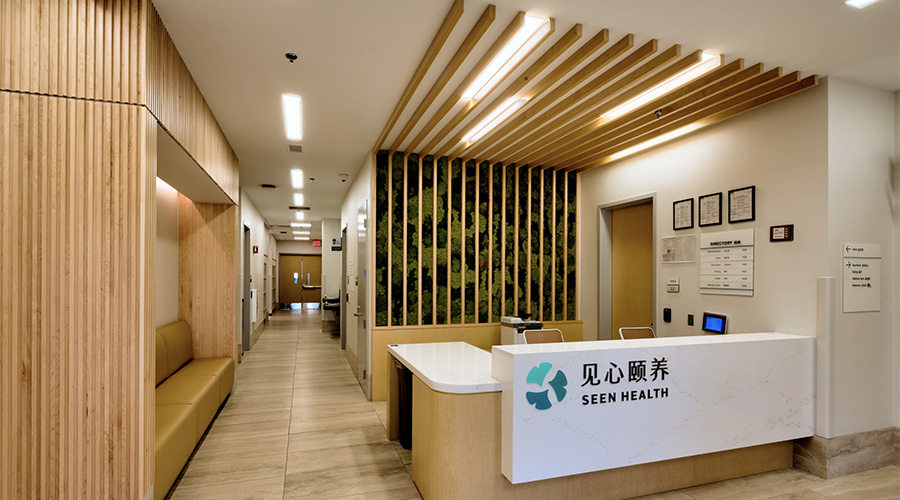Hospitals and other healthcare facilities promote wellness, yet staff and visitors often skip the stairs in favor of the ease of an elevator.
Studies have linked stair use to reduced risk of stroke, lower levels of cholesterol, and improved cardiovascular health. Stair use also reduces energy and maintenance costs and cuts wait times, saving doctors up to 15 minutes a day. LEED and WELL building standards also encourage stair accessibility and promotion.
“Hospitals have the opportunity as a place of health and well-being to be on the forefront of encouraging people to use the stairs for health benefits,” says Denise Thompson, principal with FCArchitects.
Unfortunately, the design of many multi-story healthcare buildings promotes the sedentary habit of choosing elevators or escalators.
Buildings with open, grand staircases that span one or a few floors are “visually appealing, and you know they’re there, which provides an incentive for people to use them,” Thompson says. A study found that 72.8 percent of people choose stairs in these type of stair-centric buildings.
But due to security concerns and space limitations, most stairwells in healthcare buildings are enclosed and secured and focused on practicality, not aesthetics. The same study found that in these types of elevator-centric buildings, only 8.1 percent of people walked up stairs.
“We have to try a little harder when we are wanting people to use a fire stair,” Thompson says.
Opening up or moving a stairwell is expensive and can be nearly impossible. But Thompson suggests cost-effective ways to modify existing stairwells to make them more visible, accessible and inviting:
- A signage program has been proven to significantly increase stair use. “Place signs at the point of decision,” Thompson says. “Alert people to the health benefits of using the stairs when they’re looking at an elevator.”
- Most commercial stairwells are built to be practical, not beautiful. Adding windows can make them far more welcoming, Thompson says, but if that is not feasible, consider adding glass to the doors. It reveals that stairs are available and makes patrons feel safer inside the stairwell.
- Installing ceilings over the exposed steel will make the stairwell feel more finished and less like a dark and dreary utilitarian space.
- It also can help to “change very basic flooring for something more in line with a lobby or main area,” she says. Add rubber stair treads to increase safety or a high-end stone.
- Paint and artwork on the walls add color and visual interest to an otherwise boring space. For example, a hospital in new Hampshire worked with a local artist who donated their time to create a multi-level themed mural in a stairwell.
- Upgrading to LED lights is a cost-effective way to make stairs safer and more enticing.
“A little investment to make stairs more accessible and attractive will pay off in the health of the employees and visitors,” Thompson says.
Becky Mollenkamp is a freelance writer based in St. Louis.

 How Efficiency Checklists Help Hospitals Save Energy, Water and Money
How Efficiency Checklists Help Hospitals Save Energy, Water and Money Designing with Heart: Seen Health Center Blends Cultural Warmth and Clinical Care
Designing with Heart: Seen Health Center Blends Cultural Warmth and Clinical Care Rutgers Health and University Hospital Breaks Ground on Campus Expansion
Rutgers Health and University Hospital Breaks Ground on Campus Expansion What to Consider When Modernizing Healthcare Facilities
What to Consider When Modernizing Healthcare Facilities Corewell Health Beaumont Troy Hospital to Build New Tower
Corewell Health Beaumont Troy Hospital to Build New Tower